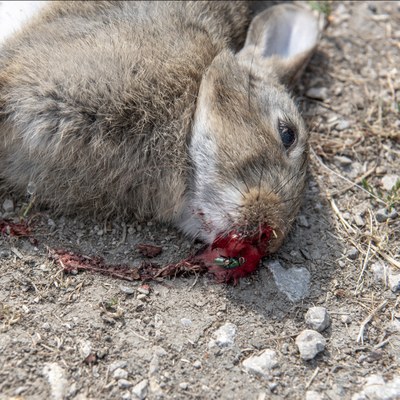Source of infection and transmission of RHD virus

RHD is highly infectious. RHDV2 has spread rapidly throughout the world, probably due to humans spreading the disease (Rouco et al. 2020). The RHD virus can survive harsh environmental conditions. It can survive temperatures of 50 degrees centigrade for up to an hour and is not inactivated by freezing. The virus can be present in the environment for many months (Henning et al. 2005a). It is not inactivated by ultraviolet light (Henning et al.2005b). Carcases and bones of dead rabbits are a source of infection. The virus can be spread via insects that feed on carcases and in the faeces of scavengers, such as foxes or crows. The RHD virus has been detected in bone marrow in samples collected 7 weeks after death (Moss et al. 2002). Biting insects, such as fleas, can mechanically transmit the RHD virus in viraemic blood from one animal to another. Blowflies and mosquitoes are known to spread the disease for long distances (Schensow et al.2014). Fly 'spots' (faeces or regurgitated ingesta) from flies that have fed on carcases of rabbits that have died from RHD are infective. Only a few virus particles are needed. A single fly spot can cause RHD (Asgari et al. 1998).
Infection is also transmitted between rabbits via the faeces of infected rabbits, which contaminate pasture during outbreaks of RHD in wild rabbits. Plants, grass or hay from pasture contaminated by fly spots or faeces from scavengers or infected rabbits could be a source of infection for rabbits kept as pets. Cultivated vegetables may also be contaminated. Foraging for wild plants to feed to pet rabbits has many health benefits but is a risk to unvaccinated rabbits. Wild rabbits tend to graze locally and keep the plants short. Selecting tall plants from areas where rabbits do not graze is always a good option when foraging in places where wild rabbits live.
Fomites such as contaminated hands, cages, pet carriers, food bowls, bedding or shoes can transmit infection. Breeding establishments, pet stores, veterinary premises or rabbit shows are places where a rabbit could contract the disease.
